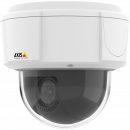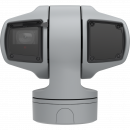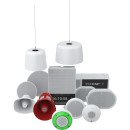
All eyes on deck – Axis Cameras enable autonomous shipping
Seafar NV develops solutions and offers services to operate unmanned and crew-reduced vessels for ship owners and shipping companies. The vessels are integrated with the Seafar control system and navigated by a licensed captain from a distance. The Belgian company uses Axis PTZ-network cameras for their remote monitoring solutions.
Remote Controlled Shipping in Belgium and Germany
Seafar NV is a front-runner in the development and operational integration of state-of-the-art technologies for semi-autonomous and unmanned shipping. They manage and operate unmanned and crew-reduced vessels via their Remote Operations Centers (ROC) in Belgium and Germany.
The Belgian company currently operates about 40 vessels on European inland waterways, monitored via Axis Pan-Tilt-Zoom (PTZ) network cameras from Seafar’s remote operating centers in Antwerp, Charleroi and Duisburg (since 2024). Routes across Germany, for example the Mittellandkanal, Elbeseitenkanal and operations within ports are now possible. Another ROC is planned for Rotterdam.

Digitalization changes the maritime industry
The company developed its innovative solution to digitalize waterborne transport and address the challenges in the shipping industry, such as the lack of trained crews and captains. By using Seafar technology owners of shipping fleets can expand the operational hours and significantly increase in operational efficiency. Seafar’s automation hardware and software components are currently being integrated on vessels which are up to 180 Meters for inland and coastal navigation.
Seafar NV has gained extensive experience already using the technology on the waterways in Belgium. It clearly shows that remote control and semi-autonomous shipping technology enhances safety, reduces human error and increases response capabilities. The shipping industry profits from streamlined operations, less costs and improved resource management, making the seas more accessible and sustainable.
Artificial Intelligence and machine learning are vital for us to feed our software’s object detection capabilities and enable a vessel to learn from its environment. We thereby augment the vessel’s operator’s situational awareness and enhance the operational safety in any kind of weather circumstances.

Technology shows new perspectives for shipping professionals
The captains in the Remote Operations Center are trained in remote pilotage to support maneuvers which happens often miles away on the vessel itself. This means an expansion of their personal skills as their career path becomes more flexible. Additionally, the constant travelling and being away from family and friends is not longer necessary while their knowledge about IT and system awareness deepens.
To see an over 100 meters long ship enter a lock with only an arm's length between the doors is simply breathtaking. Knowing that our cameras are the captain's eyes miles away in a shipping center clearly shows how innovation and technology make our lives easier.

Smart Shipping with AI and Axis
The technology leverages artificial intelligence (ai) and machine learning for object detection and sensor fusion. The combination of vessel autonomy (navigation) and remote pilotage is the key for the implementation of efficient smart shipping.
A variety of Axis PTZ network cameras provide the necessary overview of the ship and its surroundings. The AXIS Q61-, Q62- and M55-Series pan-tilt-zoom cameras are the eyes on every relevant position for the captains/skippers sitting in the control center.
Apart from superior quality and service, the Axis cameras are fully network capable. That allows an easy integration into our SEAFAR-System.
Safety has improved enormously
The cameras are used extensively by the skipper during maneuvers to provide a full overview of port and starboard as well as the front and back of the ship. A ship cannot react quickly, so maneuvers need to be planned and initiated well in advance of the actual action. The AXIS Q62-camera with its flat front glass with wiper, MIL-STD-810G and all other features certainly helps here.
Thanks to the cameras, the captain now has a much wider view around his ship than he would have from his cabin on board. Therefore, safety has improved enormously.
Ships are remotely controlled for delicate maneuvers such as in locks, but can also sail completely autonomously on simple routes using video analysis and other technologies that enable autonomous steering, so that a captain can control several ships at the same time. And when a captain can operate several vessels simultaneously from a control room, the technology becomes even more profitable.
In addition to video, Axis cameras with microphones enable the ship's crew to remotely monitor engine performance and audibly detect sounds of early engine failure. If needed, an AXIS C13 Series horn speaker can also be used to deliver live messaging to bystanders or staff.

Environmental impact
By using this new way of water transport shipping companies continually improve their efficiency of operations. This can lead to less pollution as well as strengthen the business case for further investments in green and zero-carbon propulsion technologies or shifts to clean fuel.
Products & solutions

Maritime
Get in touch
Want to know how you can benefit from Axis solutions? Get in touch and we will help you.
Contact us





